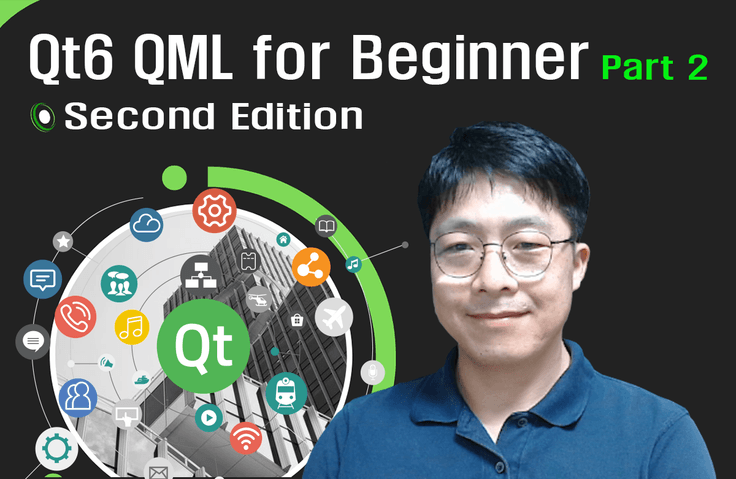![[Introduction] Qt 6 Programming Part 2강의 썸네일](https://cdn.inflearn.com/public/courses/326823/cover/9c839f33-d59f-422a-9704-64534673a39c/커버이미지_Qt 6 프로그래밍_2편.png?w=420)
[Introduction] Qt 6 Programming Part 2
qtdev
This lecture is the second part of Qt Programming Part 1. If you are new to Qt, we recommend that you study Part 1 first and then Part 2.
입문
Qt, GUI
QML for Qt UI development, we will explain in detail from introduction to practice.

Developing Modern UI with QML
UI development using QML and C++
Who is this course right for?
For those who want to develop UI using QML
For those who want to develop UI using QML in Qt framework
Need to know before starting?
C++ Basics
Qt
1,065
Learners
102
Reviews
104
Answers
4.7
Rating
9
Courses
근무경력
현: Embedded 분야 SW Team leader
LG전자, VS사업부 IVI선행플랫폼/모듈개발
SW마에스트로, SW 멘토
강의경력
삼성전자, Qt & QML 강의
LG전자, Qt & QML 분야 사내 강사
한컴아카데미 Qt 강의 출강
다수의 IT기업 Qt 강의 출강
저서
Qt 프로그래밍
Qt Quick 프로그래밍
Qt5 프로그래밍 가이드
MeeGo 프로그래밍 완벽 가이드
Qt 실전 프로그래밍
SW커뮤니티 운영
Qt 개발자 커뮤니티 운영자 ( www.qt-dev.com )
All
47 lectures ∙ (8hr 56min)
Course Materials:
All
7 reviews
4.9
7 reviews
Reviews 2
∙
Average Rating 5.0
Reviews 24
∙
Average Rating 5.0
5
This is currently the only Qt course that teaches everything from the very beginning.
Thank you so much for the good review, White. Good reviews are a great source of strength in providing good content. I will work even harder in the future :)
Reviews 1
∙
Average Rating 5.0
5
Thank you for the good review, Mr. Good Mackerel. Have a happy new year. ^^
Reviews 2
∙
Average Rating 5.0
5
I am following the roadmap and watching the lectures well. It was a great help in understanding Qt and QML in general. And it is good that you shared the materials on GitHub. In the future, it would be really good if there were a project (a program that runs on multiple screens) that can utilize the entire thing rather than just partial practice. When I look at web lectures, there are grammar or network classes at the beginning and then a CRUD bulletin board as a practice project, so if there is a process of creating a project using what I learned, the concepts that partially remain in my head will be connected and completed. I will also wait for the embedded lecture that will come out in the future. Thank you.
Hello. Son, Thank you for such a detailed course review. Thank you so much for letting me know what I need to improve. Thank you so much for your valuable feedback. I will buy you a cup of coffee someday when I have the chance. ^^; And I am preparing a project-style lecture titled "Temporary title: Implementing a real-time personal broadcasting station project". After that, I plan to conduct the "Embedded Linux Programming using Qt" and "Qt for MCU" lectures. Lastly, thank you so much for your great feedback.
Reviews 3
∙
Average Rating 5.0
5
It was a good lecture. I hope you can do an in-depth course next time. Please give me Python-QML.
Hello. JunHwan Song Thank you so much for your great review. I am also preparing a video related to Qt Python. :)
$29.70
Check out other courses by the instructor!
Explore other courses in the same field!